Return to main Astrophotos page
Calstar 2021 was again held at Lake San Antonio, from Oct. 6-9. We only attended the last two nights because of weather.
This was our first time back at Calstar since the start of the COVID-19 pandemic. There was a fall Calstar in 2020; however, we elected not to attend due to the ongoing pandemic and lack of vaccine availability at the time, as well as the severity and smoke of the 2020 wildfire season. As we understand it, Calstar was very lightly attended that year, with about 20 participants. This is still a better outcome than some other established star parties such as GSSP and OSP which had to be cancelled because of pandemic-related problems with vendors and logistics. We felt more comfortable attending Calstar this year after receiving our vaccines, and we also continued to take precautions such as physical distancing and wearing masks when indoors.
The Lake San Antonio park and resort have also undergone many changes since our first years at Calstar. California has been in an extreme drought for several years now, with the lake level at the lowest we've seen, making it a less appealing destination for water recreation. Low water levels have also resulted in the water at the campgrounds no longer being potable. The resort area is a shadow of what it once was, with the cafe and general store no longer in operation. The only other visitors we spotted at the cafe's dining area were a peacock(!) and a deer. Meanwhile, Monterey County continues to make adjustments in its operations and fee structure as it attempts to keep the park financially sustainable.
Here are a couple of pictures of the new C14 with Losmandy mount at home and at Calstar. The new setup takes up a similar amount of space in the car as the old one, but it was again quite a challenge to fit it along with all the camping gear in the car. We relied again on a roof bag, which mostly stayed in one place while we were driving! Our car has no way to disable all the lights that turn on when opening doors or the trunk, so we resorted to disconnecting the battery to avoid annoying our fellow attendees. We arrived just as it was getting dark on Friday night. It took a while to set everything up including the polar alignment, which I did using my old 60mm refractor pointed near the north celestial pole after getting it as parallel as possible to the right-assention axis of the mount. We did a fair amount of visual observing before I started with the photography, and a bit after that I started to see dew on the corrector plate. The dew cap we had made so far was apparently not blocking enough of the night sky. On Saturday we lengthened the dew cap and didn't see any more problems that night, though we did not stay up as late. After going to sleep, we were awakened by some loud pigs making chewing and snorting sounds outside our tent.
|
|
|
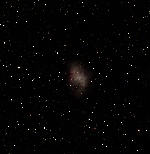 |
 |
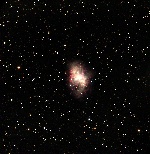 |
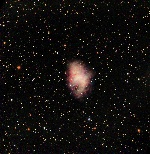 |
| pulsar marked | Imax=6 | Imax=2 | Nonlinear |
C14 + ST-4K, 1800s total exposure 10/08/21 Lake San Antonio, CA
M1 was a good first test for the C14 + 0.63x focal reducer combination at Calstar, since it is compact, was high in the sky and has interesting structures that can be seen at high resolution. The image shows somewhat more detail than previous attempts with the 8" system, though higher sharpness is probably still possible with better seeing and improvements to the tracking. As noted above, there was increasing condensation on the corrector plate for these images, with the signal dropping by about a factor of 2 by the time of the last exposure. Comparing this image with old photographs in Burnham's, I can see some outward movement of the tentacles!
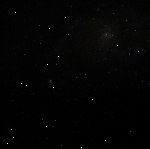 |
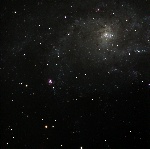 |
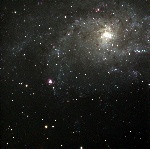 |
| Imax=20 | Imax=4 | Imax=2 |
C14 + ST-4K, 1800s total exposure 10/09/21 Lake San Antonio, CA
This was another test for the C14 + 0.63x reducer combination. M33 is my favorite galaxy to photgraph since it has so many individual stars and nebulae that can be resolved. Here, I centered on NGC604, an enormous emission nebula and star cluster contained within M33. I spent a fair amount of time trying to optimize the focus, eventually choosing a knob setting halfway between points on either side where the stars start to expand. The resolution is clearly a bit sharper than previous attempts, since I can find some close pairs of stars that could not be resolved before.
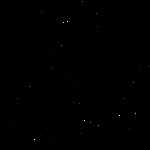 |
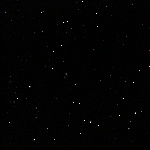 |
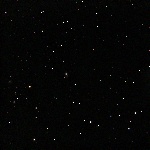 |
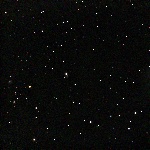 |
| Imax=20 | Imax=4 | Imax=2 | Imax=1 |
C14 + ST-4K, 1200s total exposure 10/09/21 Lake San Antonio, CA
Kathy chose this galaxy in Pisces from the Sky Safari catalog. It was also a good test of the mount's go-to alignment, and fortunately it was nearly centered in the camera to start out. The galaxy turned out to have an interesting shape with a visible spiral arm, and a number of other galaxies can be seen in the same field.